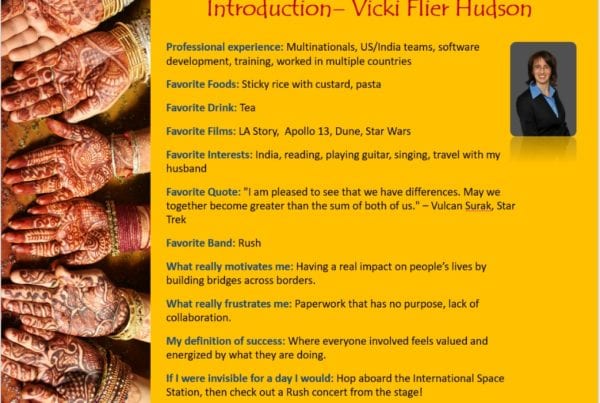 Before I found my true calling as an intercultural practitioner, I wanted to be an astronaut. Now you might say “well, most kids do,” but I took the dream seriously. I took flying lessons for three years starting at age 13. I then entered college as an Ocean Biology major in hopes of working with NASA’s life sciences program. In my second year of the university, I discovered my passion for public speaking which set me on a completely different career path.
Before I found my true calling as an intercultural practitioner, I wanted to be an astronaut. Now you might say “well, most kids do,” but I took the dream seriously. I took flying lessons for three years starting at age 13. I then entered college as an Ocean Biology major in hopes of working with NASA’s life sciences program. In my second year of the university, I discovered my passion for public speaking which set me on a completely different career path.
Nevertheless, the space program, my first love, continues to provide many lessons in the world of virtual teams and intercultural business. Let me give you an example.
Much of the research on virtual teams today points out the important difference between trust and closeness. Just because you have trust for a virtual team member’s competence and ability to meet commitments does not mean you feel close to that person. Both trust and closeness are critical for a virtual team to enter the high performance zone.
Closeness means you can feel authentic with a team member, that you get into a rhythm with them, and that you feel a sense of belonging with the team as a whole. Clients sometimes ask me how to respect cultural differences while still finding that closeness, that common ground upon which the team members can stand firmly.
A great role model for this duality is the International Space Station. Here are some facts about the station:
- Visited by astronauts from 15 countries
- The principals are the space agencies of the United States, Russia, Europe, Japan, and Canada
- Each partner has the primary responsibility to manage and run the hardware it provides.
Clearly the crew has to learn to work across cultures, but they also need to have a strong sense of shared identity to survive. The station is made up of components from all over the world, yet it must be a cohesive, whole structure to function.
How can we take some of the best practices of the ISS crew to apply to our own teams?
- Create a logo for your team that incorporates elements of the whole and the individual parts
- Play together: Engage in social interaction as well as business to strengthen your shared identity (check out this video from the space station as an example: https://youtu.be/VjRfSqXwuQ4
- Develop standard procedures that clarify shared processes, thereby minimizing misunderstandings
- Create a cultural quiz for the different cultures represented on the team, and make the answers a part of your conference calls
- Engage in daily, informal communication using technologies such as Yammer, Lync, and Skype to establish a team rhythm
- Acknowledge cultural differences and incorporate them into your way of working together; be careful of trying so hard to find common ground that you lapse into “friendly avoidance” of the differences that make you a strong team
Working across distance and culture is always an adventure, but one with many rewards if we focus on creating both trust and closeness. For more information on the subject of virtual closeness, we recommend the book Closeness at a Distance: Leading Virtual Groups to High Performance, available on Amazon: http://www.amazon.com/Closeness-Distance-Leading-Virtual-Performance/dp/1909818003/ref=sr_1_1?ie=UTF8&qid=1431537529&sr=8-1&keywords=virtual+closeness
Wishing you a happy summer wherever you are in the world!





